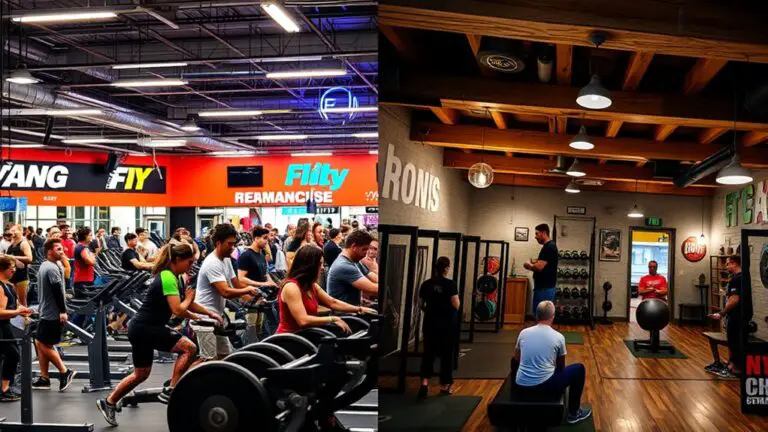The Future of Gym Memberships: What to Expect in 2030
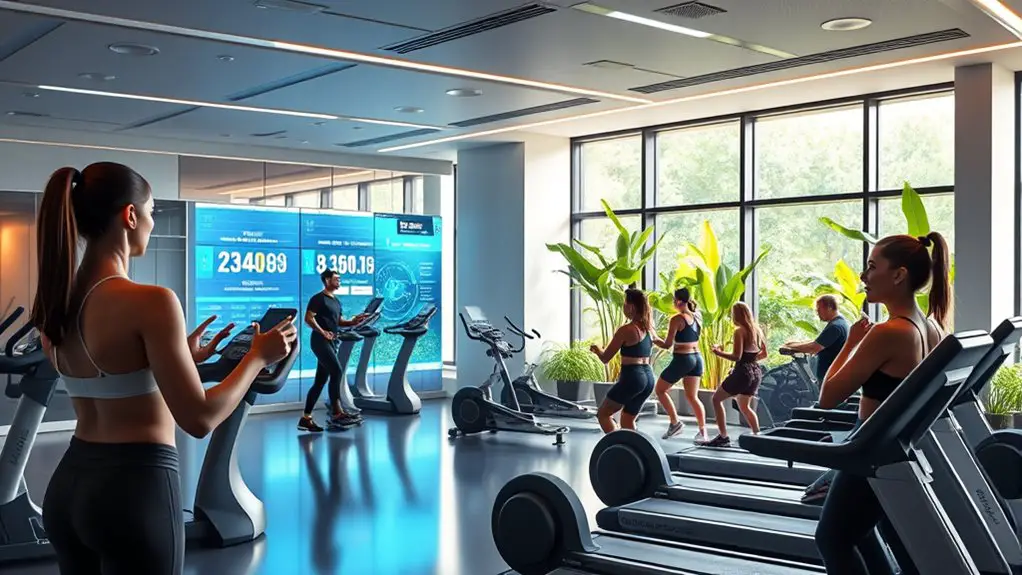
By 2030, gym memberships will likely emphasize personalized fitness experiences, reflecting the desire for tailored programs. With nearly 70% of gym-goers preferring customized training, gyms will integrate technology for real-time feedback and virtual coaching, enhancing engagement. Hybrid workout models combining live and on-demand classes will cater to diverse lifestyles. Additionally, a focus on holistic wellness and community support will boost member retention. There’s more to uncover about these trends shaping the fitness landscape.
The Rise of Personalized Fitness Experiences
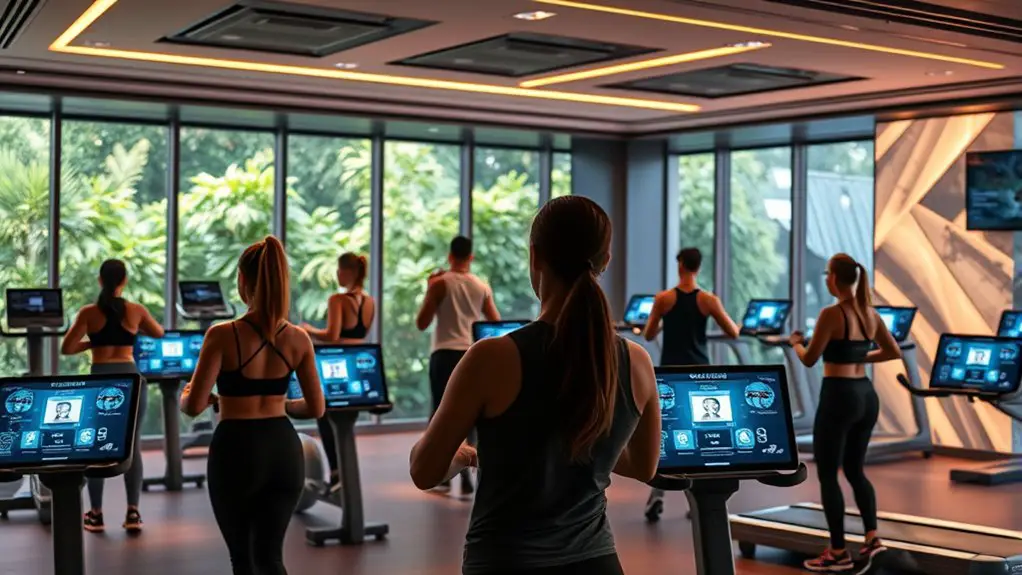
As the fitness landscape evolves, the demand for personalized experiences has surged, reflecting a broader trend toward individualized wellness. You’re likely noticing an increasing focus on customized programs that cater to your unique fitness goals, preferences, and lifestyles. Data shows that members who engage with tailored coaching are more likely to stick with their routines, achieving better results.
With nearly 70% of gym-goers expressing a preference for personalized training, the traditional one-size-fits-all approach is becoming obsolete. You’ll find that gyms are investing in tools and resources that enable trainers to develop bespoke plans, making your workouts both effective and enjoyable. Incorporating elements like effective cardio workouts can enhance the personalization of fitness programs, allowing individuals to achieve their specific weight loss goals.
As a result, the integration of these personalized experiences not only enhances member satisfaction but also fosters a sense of community, as you connect with others on similar journeys. In this evolving landscape, your fitness experience will increasingly revolve around what works best for you.
Integration of Technology in Gym Memberships
Technology is reshaping gym memberships in unprecedented ways, making workouts more accessible and engaging. With the integration of innovations like wearable technology and virtual coaching, you can expect a more tailored fitness experience that meets your specific needs.
- Real-time feedback: Wearable tech tracks your progress, providing immediate insights to enhance your performance.
- Personalized training plans: Virtual coaching allows trainers to create custom workouts based on your data and goals.
- Community engagement: Online platforms foster connections, motivating you through challenges and shared experiences.
- Flexible scheduling: Access to virtual classes enables you to work out on your terms, eliminating barriers to participation.
In 2030, these advancements will not just enhance your fitness journey; they’ll redefine it, making it easier for you to engage in effective workouts that fit your lifestyle. Additionally, the rise of proper techniques will further ensure that exercises are safe and effective, catering to individuals with various fitness levels and conditions. The future of gym memberships lies in these seamless integrations of technology.
The Shift Towards Hybrid Workout Models
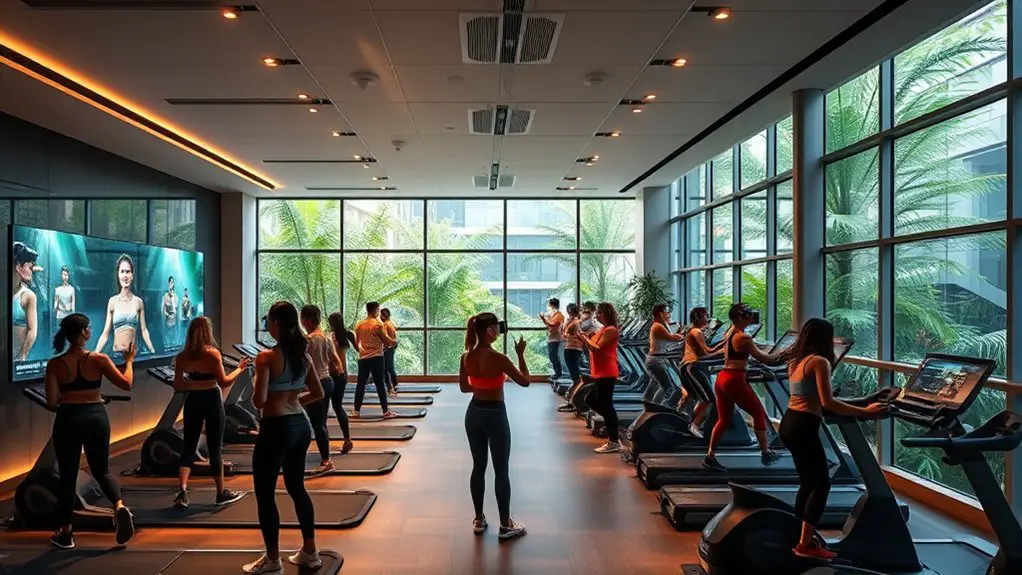
The rise of technology in fitness isn’t just enhancing your gym experience; it’s also paving the way for hybrid workout models that combine in-person and virtual training. As consumer preferences evolve, data shows that over 60% of gym-goers favor flexible scheduling, allowing them to fit workouts into their busy lives. This shift leads to an increase in virtual classes, which not only broaden your options but also provide a more personalized approach to fitness.
With hybrid models, you can enjoy the best of both worlds—attending live classes for motivation while accessing on-demand workouts whenever it suits you. Research indicates that gyms offering hybrid memberships experience higher retention rates, as they cater to diverse lifestyles. By embracing this transformation, you’re not just adapting to the future; you’re actively participating in a fitness revolution that prioritizes convenience, accessibility, and overall well-being. Additionally, incorporating activities like jump rope workouts can significantly enhance your cardiovascular fitness, making your hybrid routine even more effective.
Community Engagement and Social Fitness
While many individuals seek personal fitness goals, the power of community engagement in gyms cannot be overlooked. Engaging with a community not only motivates you but also enhances your overall fitness experience. Research shows that social connections in fitness settings lead to increased adherence and better results. Group classes and fitness challenges have become pivotal in fostering this sense of belonging. Here’s how they contribute:
- Increased Motivation: Being part of a group pushes you to show up and give your best.
- Shared Goals: Fitness challenges create a collective aim that encourages participation and accountability.
- Social Bonds: Building friendships in group classes can make workouts more enjoyable and less intimidating.
- Diverse Perspectives: Interacting with others exposes you to new techniques and ideas, enriching your fitness journey.
In 2030, expect gyms to prioritize these social facets, creating stronger community ties that elevate fitness for everyone. Additionally, the focus on proper form will likely be emphasized in group settings to ensure safety and effectiveness during workouts.
Emphasis on Holistic Wellness and Mental Health
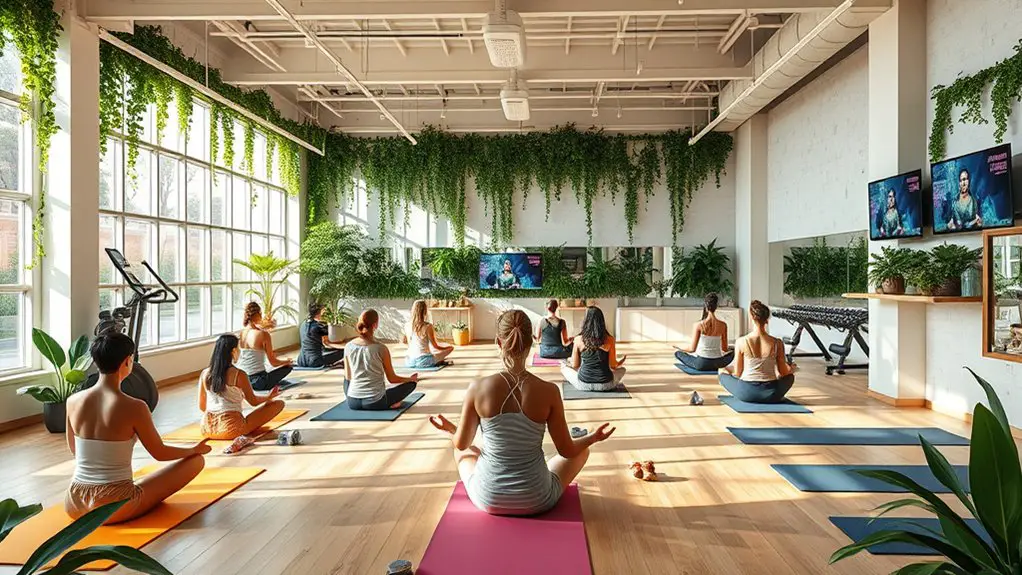
As gyms foster community engagement, there’s a growing recognition of the importance of holistic wellness and mental health in fitness environments. By 2030, you’ll likely see gyms integrating mindfulness practices into their routines, focusing not just on physical strength but also on emotional resilience. Research shows that regular mindfulness can reduce stress and enhance overall well-being, making it a key component of modern fitness.
Moreover, the demand for emotional support is rising. Gyms might implement group therapy sessions or workshops that encourage sharing experiences, fostering deeper connections among members. This approach not only improves mental health but also enhances motivation and accountability in fitness journeys.
Data indicates that facilities prioritizing holistic wellness see higher retention rates. By addressing these aspects, gyms can create a nurturing atmosphere where you feel empowered to pursue both physical fitness and mental clarity, shaping a balanced lifestyle that resonates well into the future.
Frequently Asked Questions
Will Gym Memberships Become More Affordable by 2030?
You might find that gym memberships are becoming more affordable due to evolving pricing strategies. Many gyms are now offering budget options to attract a wider audience, reflecting a shift in consumer demand for cost-effective fitness solutions. As competition increases, facilities may lower their prices or introduce tiered membership plans. This trend could make fitness more accessible to you, encouraging healthier lifestyles without straining your wallet. Keeping an eye on these developments will be key.
How Will Gym Locations Change in the Future?
In the future, you’ll likely see gym locations evolving to meet urban fitness demands. Expect a blend of traditional gyms and virtual spaces, allowing you to access workouts anytime. Urban areas may prioritize compact facilities that maximize space, while offering smart technology and community engagement. These innovations will cater to your lifestyle, providing a seamless integration of fitness into daily routines. As a result, you’ll have more options that fit your urban living environment.
Will Traditional Gyms Still Exist in 2030?
By 2023, 80% of gym-goers are exploring virtual fitness options, showing a significant shift in preferences. While traditional gyms might still exist in 2030, they’ll likely evolve to compete with boutique studios and online platforms. You could see more gyms offering hybrid models, blending in-person classes with virtual experiences. This adaptation will help traditional gyms remain relevant, catering to diverse needs while providing the community aspect many value in their fitness journeys.
What Role Will Fitness Influencers Play in Gym Memberships?
Fitness influencers are set to play an essential role in shaping gym memberships through social media and influencer marketing. You’ll likely find that their authentic endorsements and curated content can drive engagement and attract new members. By leveraging their reach, they create a sense of community and motivation, making gyms more appealing. This trend suggests that potential gym-goers may increasingly rely on influencers for guidance, ultimately influencing their membership choices and loyalty.
How Will Regulations Affect Gym Memberships in the Future?
Regulations will considerably shape gym memberships in the coming years. As you navigate this landscape, pay attention to the regulatory impact on membership compliance. Stricter guidelines may require gyms to enhance transparency, ensuring that contracts are clear and fair. This shift could lead to more consumer-friendly practices, fostering trust and accountability. Ultimately, you’ll notice that gyms prioritizing compliance will likely attract more members, adapting to a market increasingly focused on ethical standards.
